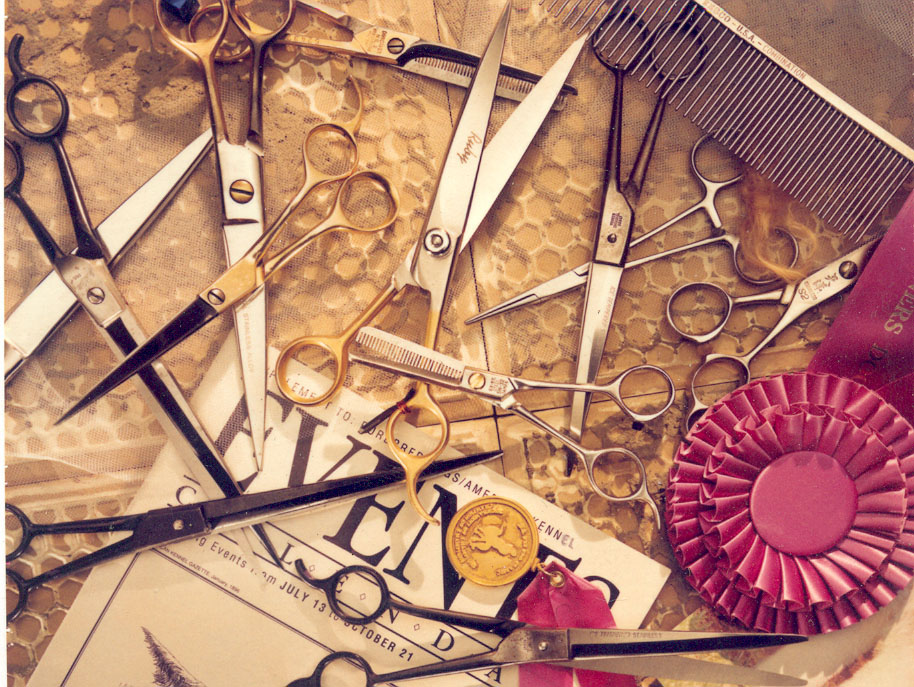 I get asked this question all the time. What is the first shear I recommend to add to a new groomer’s toolkit?
I get asked this question all the time. What is the first shear I recommend to add to a new groomer’s toolkit?
Once your clientele builds up, you’ll want to add to your shear collection. Most groomers start out with a handful of shears.
To start out you need at least these four shears in your tool kit:
• 8.5 inch straight shear
• 8.5 inch curved shear
• blenders or thinners
• small detail shear
Once you have a basic shear collection that you are happy with, then it’s time to branch out. Why? #1: Shears don’t stay sharp. Most groomers need to send their shears and blades out for sharpening. You could be without your equipment for up to two weeks. #2: Accidents happen. If shears get knocked to the floor (it happens!) many times they’ll need a trip to the sharpener before they’ll cut again. #3: There are different shears for different jobs.
I think about it like this. My home repair skills are limited. If something breaks, I’m real quick to pick up the phone for help. If you’re like me, you only keep a keep a few tools around the house. A hammer. A screw driver or two. A measuring tape. And maybe a pair of pliers. Or maybe you enjoy home repairs. Good for you. My bet is you have expanded on your collection of hand tools. I’m guessing you even have a box to keep all those snazzy tools in so they don’t get lost. But what if you are a ‘professional handyman’? Professionals have an arsenal of tools in their tool kit. Different tools for different jobs.
Professional groomers and/or stylists are no different. We never know what is going to walk through our door. Big dogs. Small dogs. Fluffy dogs. Matted dogs (but their pet parent insisted they brushed them last night!). Smelly dogs. Dirty dogs. Short coats. Curly coats. Shedding coats. Cats. Or maybe even an occasional rabbit… You get the idea.
There is a wide variety of critters we deal with every day. We need a wide assortment of equipment to groom them at a professional level. Shears are a part of that arsenal. But there are so many to choose from. Where do you start?
First establish a budget. If you are just starting out in your career, you don’t need the Ferrari of the shear styles. You put a young driver behind the wheel of a Ferrari and they’re going to get into trouble. Same thing applies with a new groomer. You’re going to get in trouble. Best thing for you to do is admire them but put them back on the table. Maybe later in your career, but not now. You need a mid-level Ford or a Toyota. Something in the $150 – $250 range.
Next – go shopping! The best place to buy shears is at a trade show. At a show there are multiple vendors. You’ll have loads of choices. At shows you can actually pick up and try the shear. That’s the best way to get the perfect fit – try them out. No shear will feel the same in everyone’s hands.
The first thing you need to shop for is replacement shears when your main shears are out for sharping. They don’t have to be identical to your starter shears but they should be close. However, I suggest bumping up in the quality factor. Most starter shears are in the $50-$125 range. Add $50 to $100 to that number and start there. Most likely you will enjoy your new shears more than the starter set. The starter set will become your back-up.
When shopping for a second blending shear, think about the types of dogs that you work on. Are you looking for a shear that can be an eraser on smaller dogs with finer coats? Or are you looking for a large pair that can cover a lot of ground on a large body dog such as a Golden Retriever or Doodle? Or are you dealing more with a terrier type coat or maybe a sporting dog style?
If you are unclear of what you need, ask someone for help. Most of the top level professionals are happy to help you fit shears to your needs and your hands at trade shows. Simply ask them. After all, the next best thing to shopping for ourselves is to help others spend their money! Super fun for all.
Ultimately you want to have four or five different styles of each basic shear in your collection so that you can tackle any coat type with ease.
~Melissa


